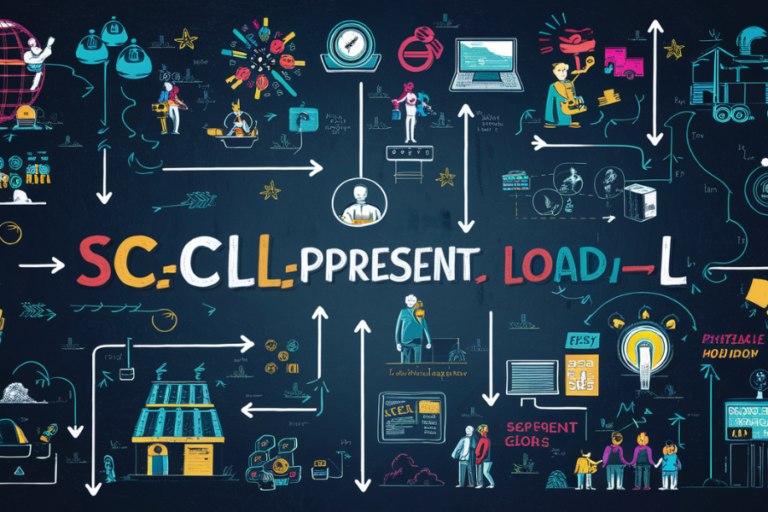Wowza Gradle Plugin: Leveraging the Power of Coding
In the realm of streaming media, efficiency and automation are crucial for optimizing workflows. The Wowza Gradle Plugin has emerged as an essential tool for developers seeking to enhance the deployment and management of Wowza Streaming Engine applications.
This post provides a thorough analysis of the Wowza Gradle Plugin, emphasizing its features, advantages, and real-world applications. With comprehensive analyses and professional viewpoints, this overview aims to equip developers with a powerful resource for optimizing their streaming media processes. Whether you’re situated in the USA or elsewhere, you can leverage the Wowza Gradle Plugin to enhance your development workflows.
Simplifying Streaming Application Management with the Wowza Gradle Plugin
The Wowza Gradle Plugin is designed to streamline the deployment and management of applications on the Wowza Streaming Engine, utilizing the versatile Gradle build automation tool. Gradle’s scripting capabilities enable efficient project builds, dependency management, and deployment processes, providing developers with a robust resource for handling their streaming applications.
Streamlining Deployment with Automation
One of the key advantages of the Wowza Gradle Plugin is its ability to automate repetitive deployment tasks. By integrating with Gradle, this plugin minimizes manual intervention, reducing the risk of errors and saving valuable time. Automation ensures that new versions of streaming applications are deployed seamlessly, without the need for constant manual oversight.
Enhancing Efficiency Through Gradle Integration
The Wowza Gradle Plugin leverages Gradle’s robust build system to improve efficiency in managing multiple Wowza instances and configurations. This integration allows for effective handling of complex media environments, facilitating a more organized approach to deployment and configuration. The use of Gradle’s advanced features ensures that deployment processes are executed swiftly and precisely.
Customizable and Flexible Deployment
Flexibility is another standout feature of the Wowza Gradle Plugin. It allows developers to customize deployment processes according to their specific requirements, whether they are working within a continuous integration/continuous deployment (CI/CD) pipeline or a local development setup. This adaptability makes the plugin a valuable tool for various deployment scenarios, accommodating diverse project needs.
Who Can Benefit from the Wowza Gradle Plugin?
The Wowza Gradle Plugin is particularly beneficial for those involved in streaming media and application deployment. Streaming media developers and DevOps engineers will find this plugin indispensable for automating and streamlining deployment tasks. Additionally, tech-savvy teams engaged in complex media projects will appreciate the enhanced efficiency and customization options provided by this plugin.
Getting Started with the Wowza Gradle Plugin
Before utilizing the Wowza Gradle Plugin, ensure that you have the following prerequisites:
- Java Development Kit (JDK): As Gradle operates on the Java Virtual Machine (JVM), a compatible version of the JDK must be installed on your system.
- Gradle Installation: Gradle should be installed on your machine. It is available for download from the official Gradle website.
- Wowza Streaming Engine: You need a local or remote instance of the Wowza Streaming Engine, which will serve as the target environment for your deployments.
With these prerequisites in place, you are ready to leverage the Wowza Gradle Plugin to enhance your deployment processes and streamline the management of your streaming applications.
Configuring the Wowza Gradle Plugin for Effective Deployment
To effectively utilize the Wowza Gradle Plugin, set up your build.gradle file with the appropriate configuration. Here’s a basic guide to help you get started with the plugin:
Add the Wowza Gradle Plugin to Your build.gradle File: Specify the plugin ID and version to ensure that you’re using the correct version for your project:
groovy
Copy code
plugins {
id ‘wowza-gradle-plugin’ version ‘1.0.0’ // Use the correct version number for your setup
}
Configure the Wowza Plugin with Server Details and Application Settings:
groovy
Copy code
wowza {
serverUrl = ‘http://localhost:8088’ // Address of your Wowza Streaming Engine
username = ‘admin’ // Admin username for Wowza
password = ‘your_password’ // Admin password for Wowza
applicationName = ‘myApp’ // Name of the application you intend to deploy
sourceDirectory = file(‘src/main/resources’) // Path to your application files
}
- In this configuration:
- serverUrl specifies the URL where your Wowza Streaming Engine is hosted.
- username and password are your Wowza admin credentials.
- applicationName is the name assigned to the application being deployed.
- sourceDirectory points to the directory containing your application files.
Customizing Deployment Tasks: Define tasks for different environments:
groovy
Copy code
task deployToDev(type: WowzaDeployTask) {
serverUrl = ‘http://dev-server:8088’
username = ‘dev-admin’
password = ‘dev-password’
applicationName = ‘myAppDev’
}
task deployToProd(type: WowzaDeployTask) {
serverUrl = ‘http://prod-server:8088’
username = ‘prod-admin’
password = ‘prod-password’
applicationName = ‘myAppProd’
}
- This setup allows you to deploy your applications to different servers, ensuring that your development and production environments are managed separately and efficiently.
Managing Dependencies: The Wowza Gradle Plugin integrates seamlessly with Gradle’s dependency management system. To manage external libraries effectively, include them in your build.gradle file:
groovy
Copy code
dependencies {
implementation ‘com.wowza:wowza-api:4.8.18’
implementation ‘org.apache.commons:commons-lang3:3.12.0’
}
- By defining your dependencies in this manner, you ensure that your project utilizes the correct versions of libraries, helping to mitigate compatibility issues and maintain a stable build environment.
Preparing Your Environment for the Wowza Gradle Plugin
To effectively use the Wowza Gradle Plugin, ensure your development environment is properly configured. Follow these steps:
- Install the Java Development Kit (JDK): As Gradle runs on the JVM, ensure you have a compatible version installed to provide the necessary runtime environment.
- Install Gradle: Download the latest version from the official Gradle website. After downloading, extract the distribution archive to a directory of your choice. Configure your system’s PATH environment variable to include the Gradle bin directory. Confirm installation by running gradle -v in your terminal, which should display a version report.
- Set Up the Wowza Streaming Engine: Download and install the latest version of the Wowza Streaming Engine from the Wowza website. Start the Wowza Streaming Engine service using the appropriate startup script for your operating system (e.g., startup.bat for Windows or startup.sh for Linux/macOS). Access the Wowza Streaming Engine Manager via your browser at http://localhost:8088/enginemanager to configure the server and oversee your streaming applications.
With these preparations completed, your environment will be ready for the Wowza Gradle Plugin, enabling you to streamline the deployment and management of your streaming applications.
Leveraging the Wowza Gradle Plugin for Efficient Streaming Management
The Wowza Gradle Plugin is an essential tool for developers working with the Wowza Streaming Engine, offering a range of powerful features that simplify deployment and management tasks.
One significant advantage of the plugin is its ability to automate the deployment process. By integrating with Gradle, it enables seamless deployment of Wowza applications directly from your build script. This automation eliminates the need for manual uploads, making the deployment process more efficient and less error-prone. The plugin also facilitates straightforward management and updating of application configurations through Gradle, ensuring consistent settings across all deployments. In the event of an issue with a new update, the plugin provides an easy way to roll back to a previous version, helping to minimize downtime and maintain service continuity.
Another important feature is customization. With a single build script, developers can specify distinct setups for various environments, including development, staging, and production. This feature simplifies deployment to multiple servers and guarantees appropriate setup for each environment. Developers can further customize the plugin’s default behavior by creating custom Gradle tasks. Additionally, it seamlessly interfaces with CI/CD pipelines, automating the complete build, test, and deployment cycle of Wowza applications.
The Wowza Gradle Plugin is designed to work effectively with other tools and plugins in the Gradle ecosystem. It utilizes Gradle’s dependency management capabilities to ensure that your application is built with the appropriate library versions. Furthermore, the plugin can integrate with logging and monitoring tools, which helps track deployment progress and capture any errors or warnings that arise. Its cross-platform compatibility makes it a versatile choice for teams working across different operating systems, ensuring a consistent and reliable deployment experience.
Optimizing Deployments with the Wowza Gradle Plugin
When combined with a CI/CD pipeline, the Wowza Gradle Plugin provides an efficient method of deployment automation. Start by adding the plugin to your CI/CD tool of choice (Jenkins, GitLab CI, CircleCI, etc.) to configure it. By automating the build process, you can ensure that every change is automatically compiled and ready for deployment.
Automated testing is a crucial part of this setup, allowing you to run tests each time a build is triggered. This step helps catch bugs or regressions early, maintaining the stability of your application. Once the build and testing phases are successfully completed, the Wowza Gradle Plugin can handle the deployment of the updated application to your Wowza Streaming Engine. This automation reduces the need for manual intervention, making the deployment process smoother and more reliable.
In the event of a deployment failure, the plugin includes a rollback mechanism to revert to the last successful version. This feature is essential for maintaining application stability and minimizing downtime.
Conclusion: Unlocking the Potential of Streaming Media Management
The Wowza Gradle Plugin represents a powerful asset for developers managing Wowza Streaming Engine applications. By automating deployment processes and providing customization options, it allows teams to optimize their streaming media workflows effectively.
For those looking to enhance their streaming applications, the Wowza Gradle Plugin is a must-have tool. With its range of features and capabilities, it empowers developers to streamline deployment, automate tasks, and ultimately deliver a superior streaming experience to their users. Whether you’re a seasoned developer or new to the world of streaming media, the Wowza Gradle Plugin offers the tools necessary to elevate your workflow and optimize application management.






